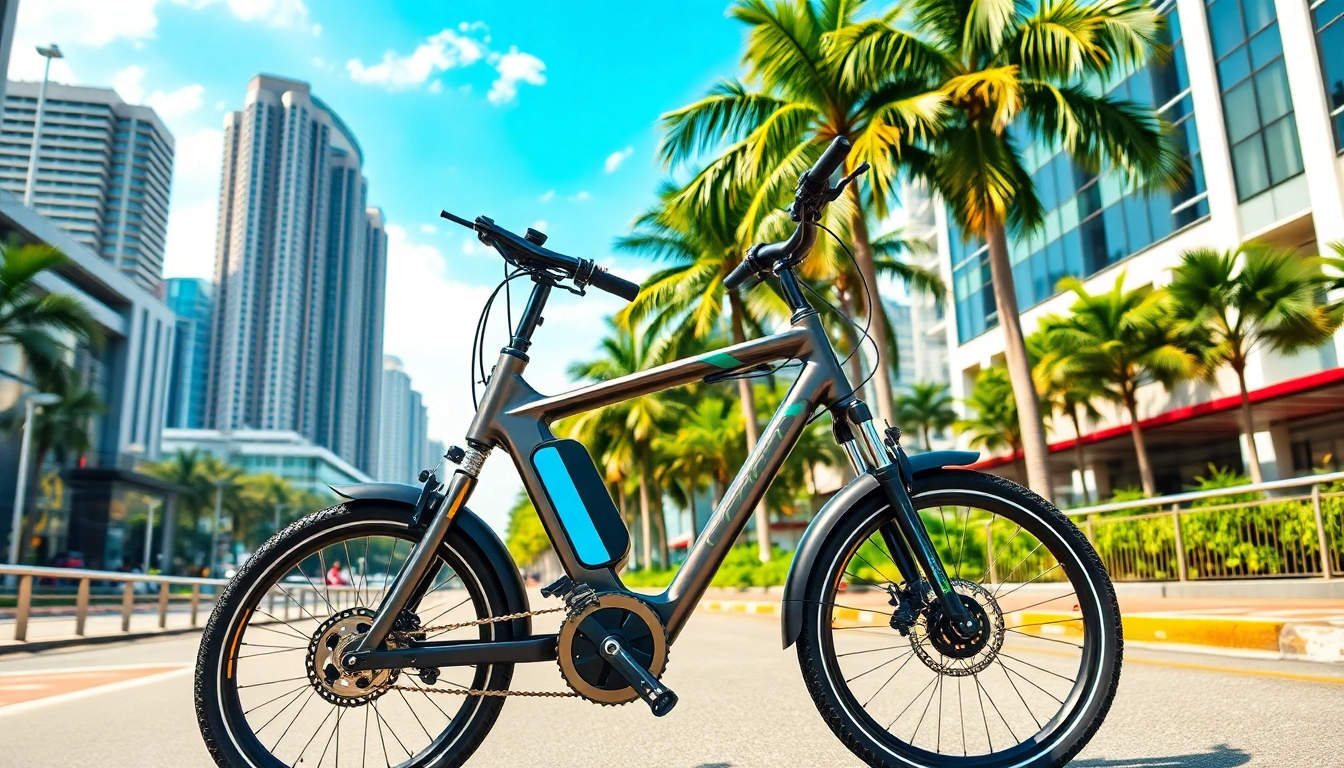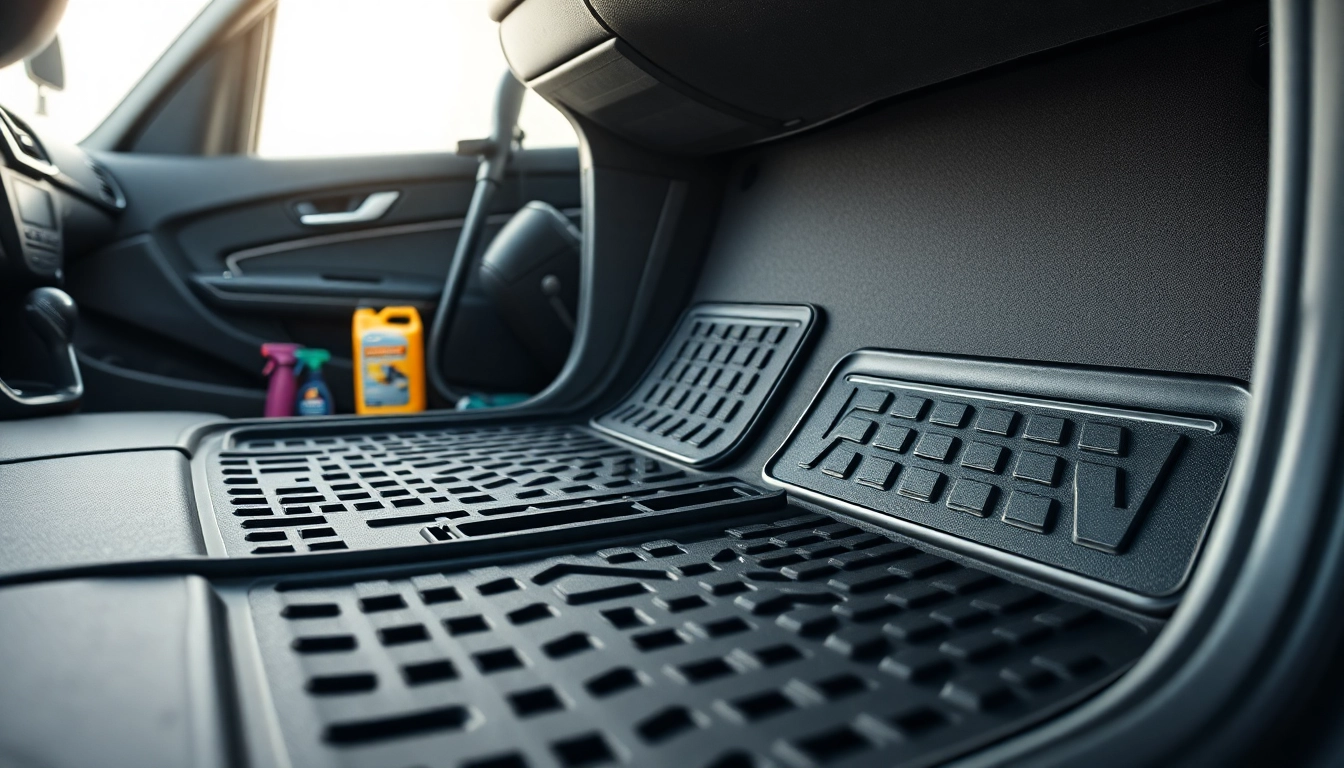Understanding the Basics of Electric Scooter
What is an Electric Scooter?
An Electric Scooter is a compact, lightweight, battery-powered vehicle designed for individual travel. Typically, it features two wheels, handlebars for steering, and an electric motor that enables it to reach moderate speeds. Unlike traditional scooters, electric scooters have become increasingly popular due to their eco-friendly nature, efficiency in urban transportation, and convenience. They are the perfect solution for individuals seeking a blend of mobility and fun, providing a cost-effective means of navigating through crowded streets.
Types of Electric Scooters Available
Electric scooters can be broadly categorized based on their design, purpose, and specifications. The most common types include:
- Kick Scooters: These require the rider to kick off initially to gain speed before engaging the motor. They are lightweight and easy to maneuver.
- Standing Scooters: The rider stands upright while riding, offering a thrill similar to skateboarding. These models are prevalent for short commutes.
- Sitting Scooters: Designed for comfort, these have a seat and are ideal for longer distances or for those who may have trouble standing for extended periods.
- Off-Road Scooters: Equipped with rugged tires and enhanced suspension, these scooters can handle rough terrains and are suited for adventurous terrains.
Benefits of Using an Electric Scooter
The advantages of adopting an electric scooter into your transportation routine are numerous:
- Eco-Friendly: Electric scooters produce zero emissions, contributing to cleaner air and a reduction in urban congestion.
- Cost-Effective: The operational and maintenance costs of electric scooters are significantly lower than those of cars or public transport over the long term.
- Convenience: Scooters are portable, lightweight, and often foldable, making them easy to carry and store.
- Reduced Travel Time: Electric scooters allow for bypassing traffic and optimal routing, often enabling faster travel times over short to medium distances.
Choosing the Right Electric Scooter for Your Needs
Factors to Consider for Daily Commutes
When selecting the right electric scooter for daily use, consider the following factors:
- Range: Evaluate how far you plan to travel on a single charge. Most scooters accommodate anywhere from 10 to 40 miles.
- Weight Capacity: Ensure the scooter can support your weight, plus any extra cargo. Models typically designate a maximum load capacity.
- Portability: If you need to carry your scooter on public transport or store it in tight spaces, look for lightweight and foldable options.
- Terrain Suitability: Match your scooter choice with the surfaces you will frequently ride on, whether it’s flat urban streets or bumpy trails.
Performance Metrics of Electric Scooters
Understanding performance metrics will help you select a scooter that meets your needs:
- Speed: Different models have varying top speeds, typically ranging from 15 to 30 mph. Consider how fast you need to travel.
- Battery Life: Look into the battery specifications, including charging time and lifecycle, which can range from a few hours to over 12 months.
- Motor Power: Generally measured in watts, a more powerful motor can handle inclines better and provide a smoother ride.
- Braking System: Choose models equipped with reliable braking systems such as disc brakes or electric brakes for enhanced safety.
Safety Features to Look For
Safety is paramount when riding an electric scooter. Key features to consider include:
- Lights: Front, rear, and brake lights enhance visibility during night rides or in low-light environments.
- Reflectors: Additional reflective components on the scooter can improve visibility to motorists.
- Anti-lock Braking Systems (ABS): Helps prevent wheel locking and skidding during sudden stops.
- Sturdy Frame: Choose a scooter made of durable materials that can withstand impacts and wear.
Electric Scooter Usage Tips and Best Practices
How to Maintain Your Electric Scooter
Proper maintenance is critical to ensure the longevity and performance of your electric scooter. Key maintenance tasks include:
- Regular Cleaning: Clean the scooter’s exterior, including the wheels and battery compartment, to prevent grime buildup.
- Battery Management: Charge the scooter according to manufacturer recommendations to prolong battery life. Avoid letting the battery completely deplete.
- Tire Maintenance: Regularly inspect tire pressure and tread to ensure optimal performance and safety.
- Periodic Inspections: Check brakes, lights, and electrical components to catch potential issues before they become serious.
Pro Tips for Safe Riding
Riding safely is essential for personal safety and the safety of others. Consider these tips:
- Wear Protective Gear: Always wear a helmet and consider additional protective gear such as knee and elbow pads.
- Follow Traffic Laws: Adhere to local traffic regulations, including using bike lanes where available.
- Stay Aware of Your Surroundings: Continuously scan the environment for obstacles, pedestrians, and other vehicles.
- Practice Defensive Riding: Anticipate potential dangers and be prepared to react accordingly.
Legal Considerations in Your Area
Electric scooter laws can vary widely based on location. It is crucial to understand the regulations that apply in your area, including:
- Age Restrictions: Some regions have minimum age requirements for riders.
- Speed Limits: Certain areas may impose speed limits to comply with local laws.
- Where You Can Ride: Local laws often dictate whether electric scooters are permissible on sidewalks, bike lanes, and roadways.
- Helmet Laws: Some jurisdictions require riders to wear helmets, especially for younger riders.
Exploring Electric Scooter Accessories
Essential Accessories for Electric Scooter Riders
Enhancing your riding experience can be achieved with various accessories:
- Lock Systems: Investing in a high-quality lock is crucial to protect your scooter when parked.
- Phone Holders: A secure phone holder can help navigate during rides without compromising safety.
- Bags and Panniers: Attachments that can hold groceries or personal items securely while riding.
- Bright Clothing: Wearing bright colors can improve visibility, especially during low-light conditions.
Customizing Your Electric Scooter
Personalization can make your riding experience unique and enjoyable. Here are some customization options:
- Handlebar Grips: Swapping out grips for more comfortable, ergonomic options can reduce hand fatigue.
- Foot Deck Pads: Rubber pads can enhance grip and comfort while riding.
- Color and Decals: Applying stickers or paint can personalize the scooter’s look and reflect your personality.
Upgrades for Enhanced Performance
To enhance your scooter’s performance, consider these upgrades:
- Batteries: Upgrading to a higher-capacity battery can extend your range significantly.
- Moto Controllers: Enhancing or replacing the motor controller can improve braking responsiveness and increase speed.
- Tires: Switching to more durable, high-traction tires can enhance safety, especially in wet conditions.
Future of Electric Scooters in Urban Mobility
Trends in Electric Scooter Technology
As electric scooters adapt to the growing demands of urban environments, several technology trends are emerging:
- Smart Connectivity: Integration with smartphones allows for enhanced navigation, tracking, and scooter health monitoring.
- Advanced Battery Technologies: Innovations in battery tech are improving range, charge time, and lifecycle.
- Autonomous Scooters: The future may include scooters equipped with smart navigation systems that facilitate autonomous riding.
Environmental Impact of Electric Scooters
Electric scooters have a promising role in reducing urban carbon footprints:
- Reduction in Private Vehicle Use: Scooters encourage a shift away from cars, decreasing pollution and congestion.
- Energy Use Efficiency: Compared to cars, electric scooters require significantly less energy per mile traveled.
- Promotion of Green Urban Planning: The growing popularity of scooters encourages cities to invest in sustainable transport infrastructure.
Community and Regulations Impact on Usage
As electric scooters gain traction, communities must adapt to their presence through:
- Infrastructure Development: Cities are increasingly investing in dedicated scooter lanes and parking spaces.
- Regulatory Frameworks: Local governments are developing policies to ensure responsible scooter usage, balancing innovation with safety.
- Public Awareness Campaigns: Educating the public on safe riding practices and regulations ensures smoother integration of scooters into everyday transport.












Leave a Reply